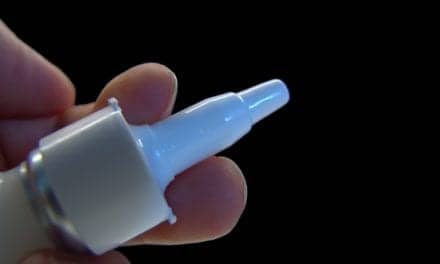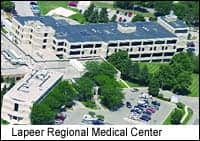Abnormal crosstalk between blood platelets and cells lining blood vessels is one cause of deadly organ damage in patients with severe COVID-19, according to a new study in Science Advances.
Led by researchers from NYU Grossman School of Medicine, the study revealed the protein signals given off by platelets—cell fragments that contribute to blood clotting—create inflammation, abnormal clotting, and damage to vessels when exposed to the pandemic virus.
The study identified two related genes, S1000A8 and S1000A9, that are turned up in the platelets of patients with COVID-19, causing them to make more of myeloid-related proteins (MRP) 8 and 14. Higher levels of the two proteins, known to operate as a pair and be present in large amounts in immune cells, were linked in the study to higher levels of clotting and inflammation in vessels, greater disease severity, and longer hospital stays.
In support of the theory that platelets are at the core of blood vessel damage in COVID-19, the research team also presented evidence that approved medications known to block platelet activation via the platelet surface protein P2Y12 (clopidogrel or ticagrelor) reduced COVID-19–related inflammation in vessels. The study also found that COVID-19–exposed platelets change cells lining blood vessels (endothelial cells) largely through a protein called P-selectin, which makes platelets stickier and more likely to form clots.
“Our findings reveal a new role for platelets in COVID-19 blood vessel damage and may explain in large part what makes the COVID-19 virus so much more deadly than its relatives that cause the common cold,” says corresponding author Tessa J. Barrett, PhD, research assistant professor in the Department of Medicine at NYU Langone Health.
Better Understanding How COVID-19 Causes Severe Cases
Abnormal, body-wide inflammation and blood clotting were identified early in the pandemic as central features of severe COVID-19, with the two thought to be interrelated, say the study authors. As blood components that react to injuries in vessels by triggering inflammation, and by becoming sticky to clump together in clots, platelets have been suggested as a culprit for the observed damage. Further, evidence is mounting that the interplay between platelets and endothelial cells may be important to these disease mechanisms.
For the current study, endothelial cells from small blood vessels were exposed to fluid released from the platelets of either patients with COVID-19 or healthy, similar patients (controls). The genetic material (RNA) was then sequenced to read the order of the molecular “letters” making up codes of active genes (transcripts) in each case. In the presence of COVID-19–activated platelets, changes were observed in the activity of the endothelial cells exposed to them, with 485 transcripts made less active and 803 turned up. Genes expressed differently in COVID-19 were linked to clotting, inflammation, and the weakening of junctions between endothelial cells, which lets blood serum seep into tissue to cause the pulmonary edema seen in severe cases, where patients’ lungs fill with fluid.
From the initial large list of potential culprits, cross-referencing with databases reduced the candidate list to two related snippets of genetic material: S100A8 and S100A9, which coded for the building of MRP8 and 14. The presence of COVID-19 in patients was found to increase the amount of MRP8/14 produced by platelets and other cells by 166% when compared to patients without the infection. Higher levels of MRP8/14 were linked to abnormal clotting (thrombosis), inflammation, and critical illness among hospitalized patients with COVID-19. Intriguingly, upregulation of S100A8/A9 did not occur after exposure of platelets to a relative of the pandemic virus, CoV-OC43, which causes the common cold.
In addition, the research team found that platelet-driven endothelial damage and abnormal clotting may occur through the action of P-selectin in platelet components called alpha-granules. Normally located inside alpha-granules, P-selectin “flips” to the outside as platelets are activated, where it promotes the clumping of platelets and signals that turn up the local immune response.
The researchers also found that the anti-clotting P2Y12 inhibitors reduced the expression of S100A8 and S100A9 in platelets by 18 percent over 4 weeks, and in lab tests prevented COVID-19 platelets from inducing blood vessel damage.
“The current study supports the theory that platelets are activating endothelial cells through P-selectin, and that both P-selectin and MRP8/14 contribute to vessel damage and an increased risk of dying,” says senior study author Jeffrey S. Berger, MD, director of the Center for the Prevention of Cardiovascular Disease at NYU Langone and associate professor of medicine and surgery. “As our team also leads ACTIV-4a, a large, ongoing NIH-funded, anti-clotting trial in COVID-19, we are currently testing in patients whether P2Y12 inhibitors can better prevent severe disease, with the results to be presented at the American Heart Association annual meeting in November.”
ACTIV-4a will also soon begin testing the effect of a P-selectin inhibitor called crizanlizumab in patients hospitalized with COVID-19, says Dr. Berger. Targeting P-selectin may block both platelet and endothelial cell activation, and their interactions, whereas P2Y12 inhibitors address only platelets.










